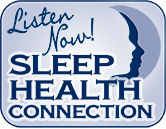ScienceDaily (June 8, 2010) — The average academic grades of children and teens with moderate to severe obstructive sleep apnea are worse than the grades of students who have no sleep-disordered breathing, according to a research abstract presented June 8, 2010, in San Antonio, Texas, at SLEEP 2010, the 24th annual meeting of the Associated Professional Sleep Societies LLC.
Results indicate that moderate to severe obstructive sleep apnea was linked to both lower academic grades and behavioral concerns expressed by parents and teachers. The results remained significant after adjustment for sex, race, socioeconomic status and sleep duration on school nights. Students with moderate to severe sleep apnea averaged a half-letter grade lower than those without any evidence of sleep-disordered breathing. None of the students with moderate to severe OSA had an “A” average, and 30 percent of them had a “C” average or lower. In contrast, roughly 15 percent of participants without sleep-disordered breathing had an “A” average, and only about 15 percent had a “C” average or lower.
“There was an impressive impact of sleep-disordered breathing on academic grades,” said principal investigator and lead author Dean W. Beebe, PhD, associate professor of pediatrics in the division of behavioral medicine and clinical psychology at Cincinnati Children’s Hospital Medical Center in Ohio. “That leaves the subjects with moderate to severe sleep apnea at a serious disadvantage.”
Follow-up tests suggested that OSA was particularly associated with inattention and poor study skills in real-world situations, which could cause functional impairment at school. In contrast, there was no significant link between OSA and office-based tests that measured aspects of neurobehavioral functioning such as intelligence, memory and problem solving.
The study involved 163 overweight children and adolescents between the ages of 10 and 17 years. According to the authors, overweight subjects were targeted because excessive weight is a primary risk factor for OSA in this age group. Participants’ sleep was evaluated by overnight polysomnography, and parents reported whether or not their child snores. Forty-two students had moderate to severe OSA, which was defined as having an apnea-hypopnea index of more than five partial and complete breathing pauses per hour of sleep. Fifty-eight participants had mild OSA with an AHI of one to five; 26 students were snorers with an AHI of less than one and a parent report of snoring; and 37 of the children and teens had no sleep-disordered breathing.
School grades were reported by students and their parents, and student behavior was reported by parents and teachers. Office-based neuropsychological testing was performed to assess neurobehavioral functioning.
Beebe added that the negative effect of OSA on the academic success of children and teens could have ramifications that extend beyond the classroom.
“Academic performance in middle and high school has implications for adult outcomes, including high school graduation, college admission and completion, and adult mental illness and substance abuse,” said Beebe. “Similarly, the poor attention and other deficits reported by both parents and teachers of subjects with obstructive sleep apnea raise concerns about the long-term prospects of teens with sleep-disordered breathing.”
The study was supported by the American Sleep Medicine Foundation; and the National Heart, Lung, and Blood Institute and National Center for Research Resources of the National Institutes of Health.
Story Source:The above story is reprinted (with editorial adaptations by ScienceDaily staff) from materials provided by American Academy of Sleep Medicine.
American Academy of Sleep Medicine (2010, June 8). Sleep apnea in children and teens to linked to lower academic grades. ScienceDaily.







(630) 369-5508